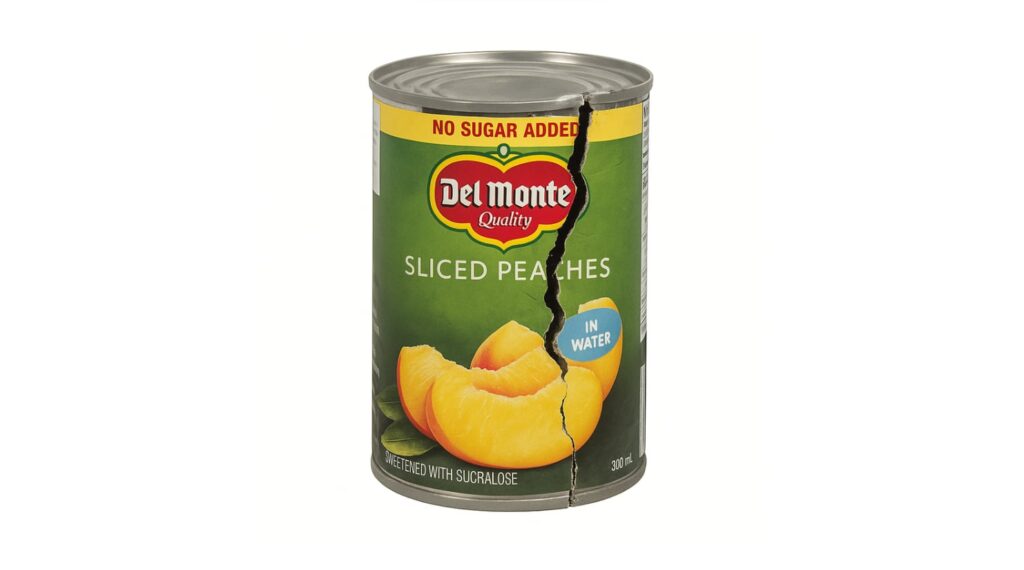In times of market turbulence, hope is not a strategy.
The escalating trade tensions between the US and Canada are sending shockwaves through the food and ag industry, disrupting established supply chains and forcing companies to rethink their market approach in both the U.S. and Canada.
Uncertainty of any kind is bad for business, especially for the food business where so many elements are already out of our control, from weather to supply chains, to fickle consumers preferences.
To survive, clear strategic focus is essential. You need to know exactly where to direct your resources, which opportunities to pursue, and which initiatives to put on hold.
While this challenge is particularly acute right now, it’s one I’ve seen play out countless times in our industry. When I sit down with food and ag company executives, I often hear the same story:
“We know we should be focusing more strategically, but we’re just trying to keep the lights on.”
Sound familiar?
if the answer is yes, let me tell you that you’re not alone on this. I consistently see incredibly talented teams caught in the daily grind – managing supply chain hiccups, responding to retailer demands, and putting out the inevitable fires. By the time these immediate issues are handled, there’s precious little energy left for the strategic thinking that actually drives growth.
But this is a recipe for stagnation. Without clear direction, resources get scattered across too many initiatives. That innovative product line you’re excited about? It’s getting the same attention as the legacy product that hasn’t grown in years. Your marketing team is stretched thin supporting everything equally instead of powering your real growth engines.
In the past, gaining real strategic clarity meant either expensive consulting engagements or pulling key people away from critical operations for weeks at a time. For most food companies, especially the mid-sized innovators that are the backbone of our industry, neither option seems realistic.
Why Things Are Different Now
The good news is that AI has completely changed this equation. The bad news is that hardly anybody uses the tools available. But the strategic frameworks I’ve used with global food giants for years are now accessible to companies of all sizes – without the massive investment of time and resources.
I’ve always been particularly fond of the Boston Consulting Group’s Growth-Share Matrix. It’s not new or flashy, but there’s a reason it’s stood the test of time – it creates a level of decision-making clarity that’s hard to match. By categorizing your products based on their growth rate and market position, it cuts through the noise and shows you exactly where to focus.
A Clear Framework for Making Tough Decisions

The beauty of this approach is its simplicity. Every product or service in your portfolio falls into one of four categories:
Stars
These are your winners – high-growth, high-profit offerings that are leading in their categories. Think of that innovative plant-based line that’s flying off shelves or your premium functional beverage that commands strong margins.
Question Marks
Here’s where it gets interesting – these products show promise but haven’t yet proven their profitability. That novel ingredient technology you’re developing or that new distribution channel you’re testing? They belong here, and they deserve selective investment to see which can become tomorrow’s stars.
Cash Cows
We all have them – those reliable, established products that may not be growing quickly but consistently deliver profits. Your flagship product that grocery stores can’t do without, or that foodservice staple with loyal institutional customers.
Underperformers (or dogs)
The product extensions that never quite caught on, the legacy items that are slowly declining but nobody wants to talk about discontinuing. They’re consuming resources that could be fuelling your growth engines, but instead they are slowing down the entire company.
AI Makes This Approach Actually Doable
Most food company leaders I speak to believe they lack the data capabilities needed for strategic planning. But the reality is that you likely have a lot more usable data than you think.
- You no longer need perfect data to start. AI can work with the sales information, market intelligence, and customer feedback you already have – filling gaps and finding patterns you might miss.
- Analysis that once took weeks now happens in hours. Machine learning algorithms can quickly classify your portfolio and identify the metrics that actually matter for your business.
- Implementation becomes clearer. Instead of vague strategic recommendations, AI can help generate specific action plans for each product category.
- Ongoing monitoring becomes automatic. Rather than a one-time exercise, AI tools can continuously track how products move between categories as markets evolve.
I recently worked with a specialty ingredients company that was spreading its innovation budget across twelve different initiatives. After applying this framework with our AI tools, they realized three of those projects had true star potential. By redirecting resources, they brought those products to market twice as fast – and saw their growth rate double within nine months.
Making This Work For Your Business
While I’m enthusiastic about this approach, I’ll be the first to admit it’s not a magic solution. The BCG Matrix is a starting point, not the final word. The real value comes from combining these analytical frameworks with your team’s expertise and deep understanding of your customers.
The key is starting. You don’t need perfect information or a complete overhaul of your strategy. Begin with what you have, focus on making a few critical decisions better, and build from there.
Ready to Find Your Focus?
We combine food industry expertise with cutting-edge AI capabilities to help companies achieve this kind of strategic clarity. This turns food culture into potential, purpose, and profits through data-driven decision making that respects the unique challenges food businesses face.
Whether you’re looking to revitalize your product portfolio, identify new growth opportunities, or maximize returns on your existing offerings, we can help you apply these powerful frameworks to your specific business challenges.
The days of strategic clarity being available only to the biggest players with the deepest pockets are over. Let’s talk about how we can help you find your focus and fuel your growth.
Limited Time Offer: Strategic Clarity Session
In response to the current market challenges, I’m offering two hours of my time to work directly with you on finding strategic direction for your company. This offer is available to the first five companies that reach out.
No strings attached – just straight talk about your business and how to navigate these uncertain times with confidence.
Ready to cut through the uncertainty? Email me at [email protected] to claim your session.




